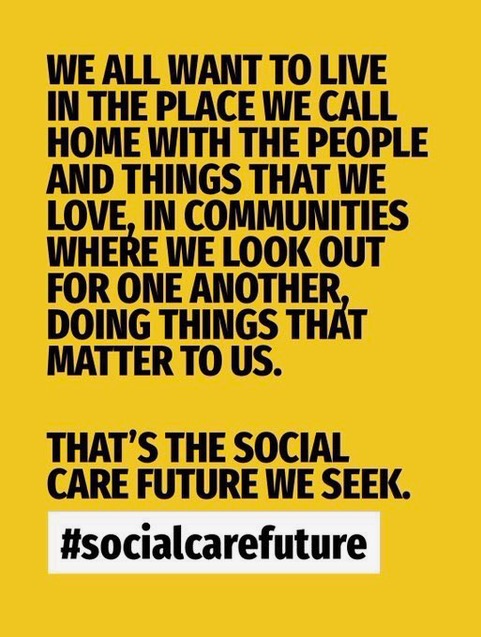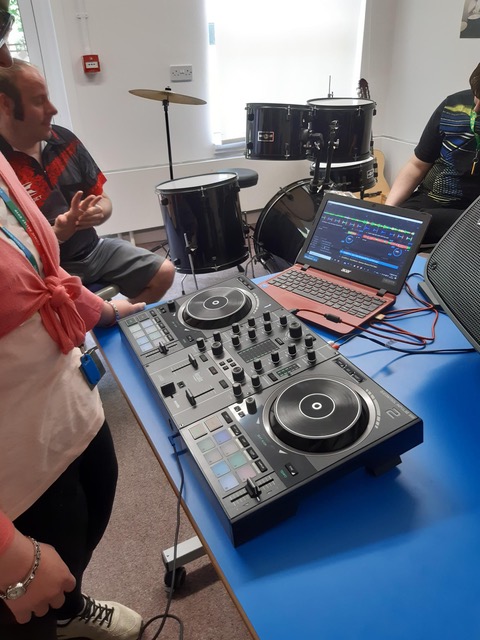Written by Suzie Franklin, Jennie’s mum
Within the first couple of months of Jennie’s Circle, Helen Sanderson suggested that we did a Path. A Path is a style of person-centred planning that focuses on someone’s future and how to get there. Initially the most important thing for me to concentrate on was Jennie’s future once she left college and to think about the more distant future, for example where she might live, at a later stage.
 The whole Circle was involved with Jennie’s Path and this reflected the information from Jennie’s Essential Lifestyle Plan. We spent an evening with two facilitators using a visual process – a huge poster showing a Path and all the things we would need to do together to journey along it.
The whole Circle was involved with Jennie’s Path and this reflected the information from Jennie’s Essential Lifestyle Plan. We spent an evening with two facilitators using a visual process – a huge poster showing a Path and all the things we would need to do together to journey along it.
We started off by looking at the future, called the ‘North Star’, our hopes and dreams. Then we thought about what would be practical and possible in two years’ time, then looked at the steps we would need to take in one year, six months, three months, one month and our first steps to reach that point. So, in effect, you start off by looking into the future and then work backwards to set the goals and deadlines to achieve that future. This is all illustrated on the Path.
When thinking about our hopes and dreams, the facilitators encouraged us to be as creative as possible rather than focus on any obstacles that might be in the way. To start with I found some of the terminology a bit American, ‘North Star’ – and I was slightly uncomfortable coming up with ideas that were too unrealistic because I was thinking ‘is that really going to happen?’. But using the Path taught me that it is important to think really creatively because it encourages you to aim higher. Based on what we knew was important to Jennie, we came up with her ideal future scenario: she would be living in the country with animals, living close to a river with a waterwheel on the side of the house, with people who love her supporting her, near a cinema and with a private jet to take her to Disneyland! Obviously this isn’t going to happen unless (or even if!) we win the lottery, but the point is that this picture gives us a direction to aim for and to get close to it is an achievement. So, for example, Jennie loves being around animals and we are considering whether she can do some voluntary work at the riding stables or Chester Zoo. She is already a member of the zoo and goes at least once a month.
The Path was really useful because it kept us focused on what was important to Jennie and the possibilities for her future. But I personally found it quite a challenging tool to use because I had to change my attitude from thinking ‘this is ridiculous, it’s never going to happen’ to ‘if you don’t strive for the ultimate then you are never going to take little steps to reach your hopes and dreams’.
If you can change the way you think then you can change the way you support people. It’s not necessarily about more time and money, it’s all about attitude. The idea is to use the hopes and dreams as an inspiration and then work to a more realistic, achievable goal but it helps you think about things that may never have crossed your mind before. So although you can’t make all those things happen all the time, you can get close to some of them some of the time. That is important and it sets you in a particular direction.
The Path helped the Circle focus on what was important to Jennie and ensured we were keeping her at the centre of her life. The dreams we all knew were important to Jennie informed us about what activities she would do and who the best people would be to support her into the future. It was at the Path meeting that we first started to think about personal budgets as a way to move forwards.
Suzie and Helen have recently written a book sharing Jennie’s transition journey and her Circle of Support which you can read more about here.
This blog is brought to you by Community Circles. If you want to learn more about Circles of Support from Community Circles, like us on Facebook and follow us on Twitter.






